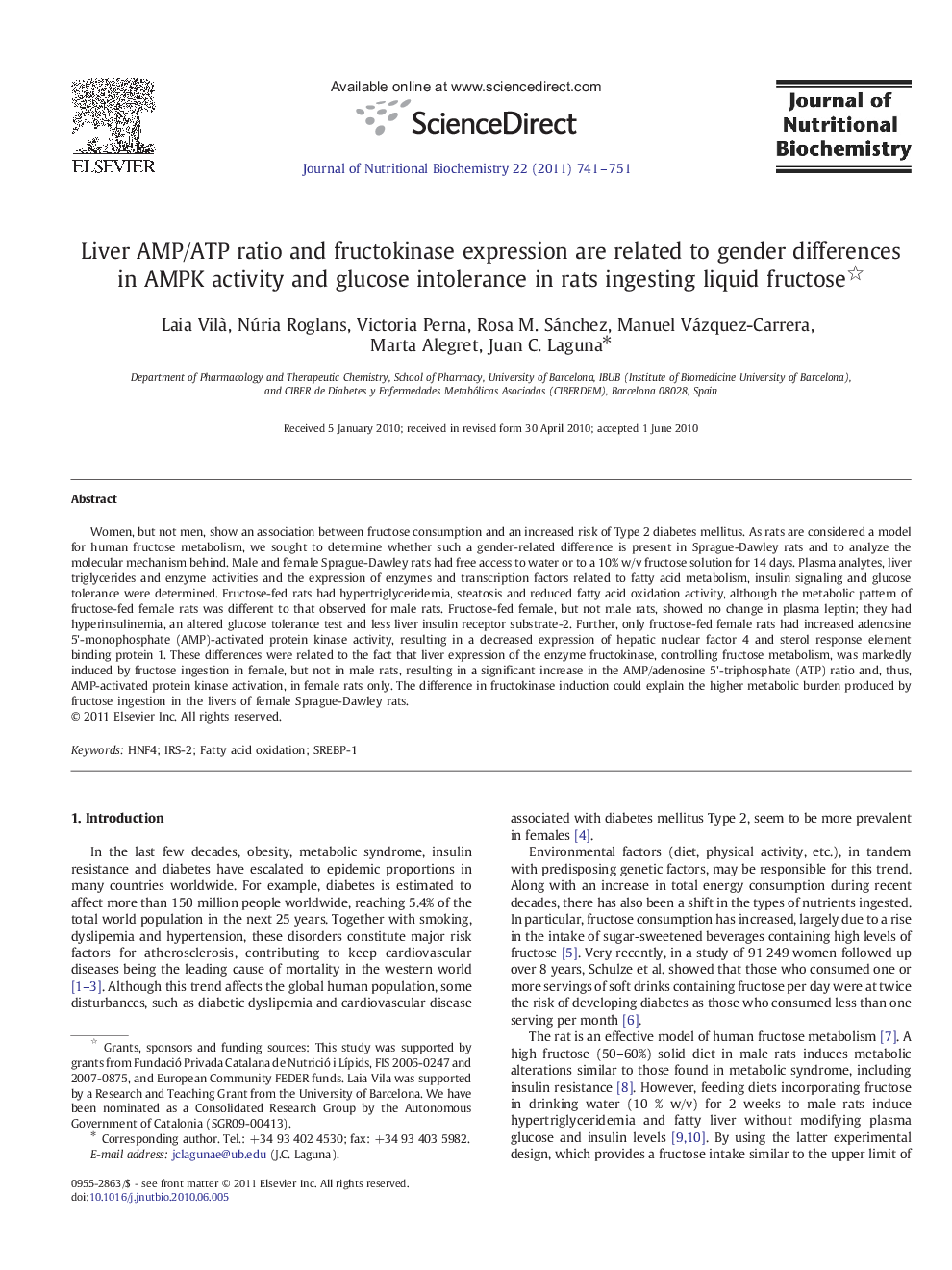| Article ID | Journal | Published Year | Pages | File Type |
|---|---|---|---|---|
| 1990668 | The Journal of Nutritional Biochemistry | 2011 | 11 Pages |
Women, but not men, show an association between fructose consumption and an increased risk of Type 2 diabetes mellitus. As rats are considered a model for human fructose metabolism, we sought to determine whether such a gender-related difference is present in Sprague-Dawley rats and to analyze the molecular mechanism behind. Male and female Sprague-Dawley rats had free access to water or to a 10% w/v fructose solution for 14 days. Plasma analytes, liver triglycerides and enzyme activities and the expression of enzymes and transcription factors related to fatty acid metabolism, insulin signaling and glucose tolerance were determined. Fructose-fed rats had hypertriglyceridemia, steatosis and reduced fatty acid oxidation activity, although the metabolic pattern of fructose-fed female rats was different to that observed for male rats. Fructose-fed female, but not male rats, showed no change in plasma leptin; they had hyperinsulinemia, an altered glucose tolerance test and less liver insulin receptor substrate-2. Further, only fructose-fed female rats had increased adenosine 5'-monophosphate (AMP)-activated protein kinase activity, resulting in a decreased expression of hepatic nuclear factor 4 and sterol response element binding protein 1. These differences were related to the fact that liver expression of the enzyme fructokinase, controlling fructose metabolism, was markedly induced by fructose ingestion in female, but not in male rats, resulting in a significant increase in the AMP/adenosine 5'-triphosphate (ATP) ratio and, thus, AMP-activated protein kinase activation, in female rats only. The difference in fructokinase induction could explain the higher metabolic burden produced by fructose ingestion in the livers of female Sprague-Dawley rats.
